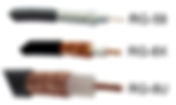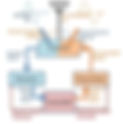Search Results
56 items found for "antennas"
- Hey, Which Coaxial Cable Should I Use?
Coaxial cables are the most popular form of transmission line for getting our signals to and from our antennas This loss applies to both transmit and receive… we’ll get less power out to the antenna and we’ll have
- Rules of Thumb for Decibels
station with 150 watts transmitter power output, 2 dB feed line loss, 2.2 dB duplexer loss, and 7 dBd antenna transmitter power output, 4 dB feed line loss, 3.2 dB duplexer loss, 0.8 dB circulator loss, and 10 dBd antenna
- Power Calculation (G5B03)
For instance, an antenna converts electrical energy into electromagnetic radiation (and some heat), and the antenna imposes a load on the transmitter circuit, impeding the flow of AC.
- VHF Multi-mode Transceiver
A quarter-wave vertical antenna B. A multi-mode VHF transceiver C. An omni-directional antenna D. Note the horizontal Yagi antenna being employed by KØNR in the photo above.
- Power and Phase
making sure the 50 Ω output of your transceiver drives a 50 Ω transmission line that connects to a 50 Ω antenna The load resistance, RL might represent the antenna or dummy load.
- FM Repeaters -- An Introduction
Duplexer: Inbound RF signals from a transmitting station are received by the repeater antenna and directed A duplexer is a device that allows a single antenna to be used simultaneously for transmitting and receiving strength is directed to the receive side path, while allowing the transmit signal to pass on to the antenna An alternative to using a duplexer in a repeater is to arrange separate antennas for transmit and receive long feedlines this arrangement presents, the more common scenario is use of a duplexer with a single antenna
- RF Ground Conductors (T4A08)
station that is more than about 1/10 of a wavelength for your transmitting frequency may act as an antenna So, your antenna feedline, your microphone cable, your equipment power cords, that computer interface connects to the safety ground of your shack’s power outlet will usually serve as an excellent undesired antenna
- Time & Frequency Domain Signal Views
These RF electrical signals energize an antenna, moving currents back and forth in the antenna's driven
- Complex Impedance Part 3: Putting It All Together
impact the behavior of AC circuits, particularly with respect to power transfer and resonance, as in RF antenna You want your transmitter, feed line, and antenna feed point to be closely matched in impedance to avoid Yes, in most transmitters and coaxial cable-based antenna systems we use 50-Ω impedance, and we seek an antenna feed point impedance near that magnitude. Ideally, we would like the feed point impedance at the antenna to be mostly resistive and have little
- Vacuum Tubes (G6A10)
a transmitter signal voltage controlling a large current to boost the power of transmission to the antenna
- Understanding Single Sideband (SSB)
thousands of miles distant, become very weak in comparison to the initial output power at the transmitting antenna earth's magnetic field, further reducing the signal’s ability to induce currents on a distant receiving antenna For non-skip SSB, operators use horizontal polarization with antenna elements parallel to the surface
- Types of Radio Frequency Interference (T7B03)
components, overloading them and making it impossible to properly process weaker signals received via the antenna












